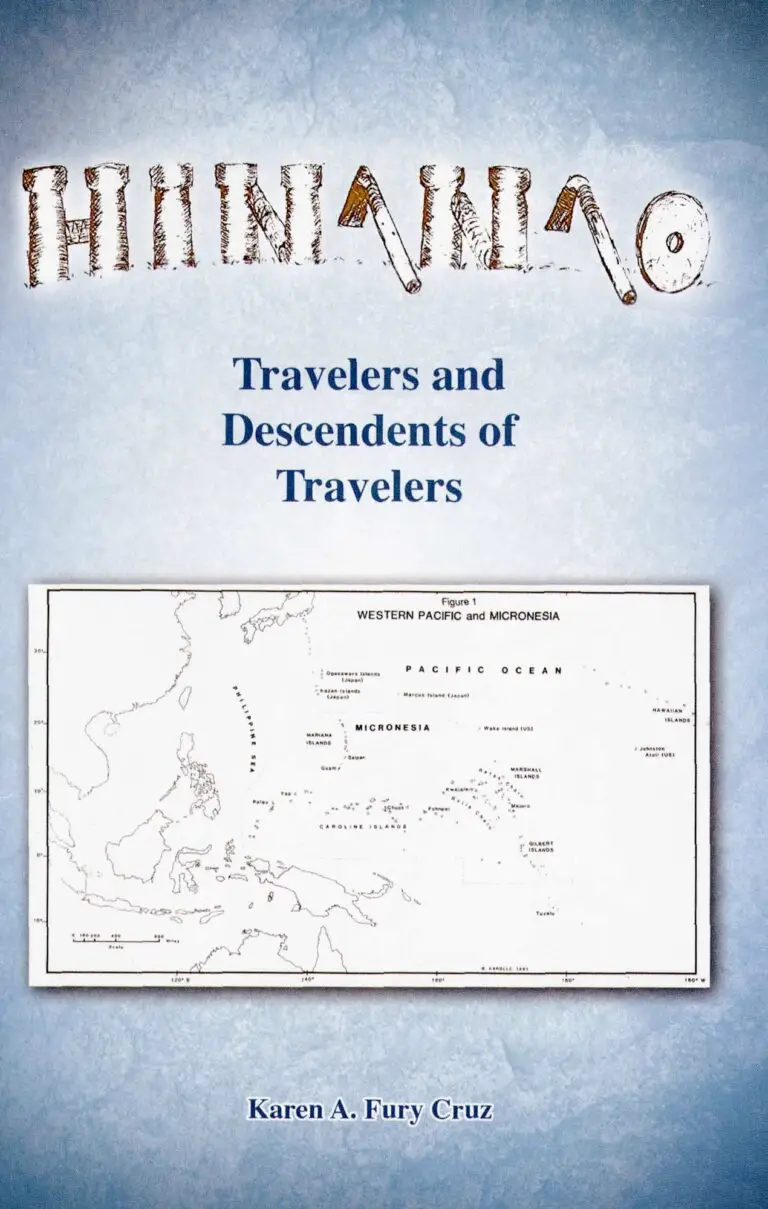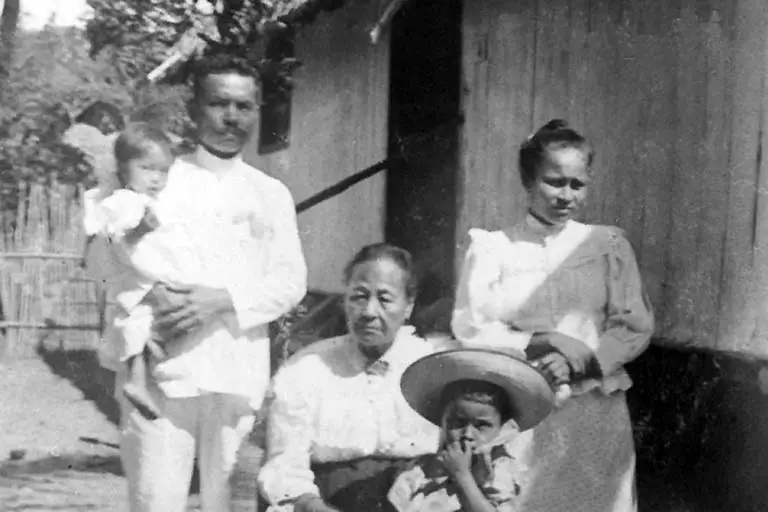Hinanao: Travelers and Descendants of Travelers


Table of Contents
Share This
Pre-WWII Hinanao
The word hinanao refers to “travel” and “travelers.” The Mariana Islands have hosted a multitude of travelers over the centuries such as Spanish Galleons, whaling ships, and the US Navy. In turn, CHamorus/Chamorros traveled out from the Marianas to other parts of Micronesia and the world for economic opportunities, education, and of course, adventure.
In the late 1800s, Chamorros migrated to Yap to work, first for the Germans, then for the Japanese in the government and the copra industry. Others went to Palau to also work in the copra industry, and additionally in the phosphate mines. The arrival of the Pan American Clipper provided further opportunities for travel in and out of Guam. Then in 1941, World War II erupted, changing the lives of all forever.
Oral histories
The personal stories of the following four Chamorros reflect the influences of these migrations and reveal the lasting effects of WWII in their lives.
Jose Adriano Untalan, born in Yap on 14 June 1914, was the son of Mecaila and Jesus Untalan. His father was a businessman who sold copra among other goods to Japanese soldiers. For many years, Jose worked as a supervisor for a team of Chamorro boys who harvested coconuts, then later, worked for the Japanese as a policeman and Yapese interpreter.
Eliza Iwashita Atoigue and Maria Iwashita Perez, daughters of Manuela Lewis and Javier Kuninori Iwashita, were born in Yap in 1940 and 1941. Their Japanese father was brought to Yap from Japan to work in construction. Their mother grew up in Yap and was the daughter of Jose De Leon Dela Cruz and Francisca Garcia Lewis from Guam. She was also the granddaughter of Juliana Flores Garcia, who married Captain Evan Lewis from England.
Frederica Flores Santos was born in Saipan in 1932. Her father, Francisco Aguon Flores, was born in Palau in 1898, was sent to Yap as a young boy to study, and later worked at the local cable station. After his marriage to Maria Pangelinan Pangelinan from Guam, he settled in Saipan and worked for the sugar factory.
These four Chamorros came to Guam to live after WWII, each for different reasons and under different circumstances. Several endured discrimination for living in Japanese-occupied islands, or for being or speaking Japanese. Travelers exist in everyone’s ancestral lineages, and most share similar experiences that have impacted their lives and the lives of their descendants. These are some of their stories.
Purchase a copy of Hinanao: Travelers and Descendants of Travelers, by Karen A. Fury Cruz in our Guampedia Heritage Gift Shop here.
